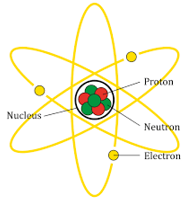We elaborate the uses of Yttrium and atomic properties with characteristics. Yttrium is a silver-white chemical element with an atomic number 39. Its symbol is Y and it belongs to the group of transition metals and its usual state in nature is solid. Yttrium is located at position 39 on the periodic table.
You Can Visit Our Managed: Periodic Table Main Page
On this page you will discover the chemical properties of yttrium and information about yttrium and other elements on the periodic table such as scandium, lanthanum, lutetium or strontium. You will also learn what yttrium is for and you will learn what its uses are through its yttrium-associated properties such as its atomic number or the usual state in which yttrium can be found.
You will see qualities of yttrium such as its melting and boiling point, its magnetic properties or what its chemical symbol is. In addition, here you will find information about its atomic properties such as the distribution of electrons in yttrium atoms and other properties.
For some elements some of this information is unknown. In these cases we show the properties attributed to them.
Yttrium properties
Transition metals, also called transition elements is the group to which yttrium belongs. In this group of chemical elements to which yttrium belongs, there are those located in the central part of the periodic table, specifically in block d. Among the characteristics that yttrium has, as well as those of other tansition metals, is that of including in its electronic configuration the d orbital, partially full of electrons. Properties of this type of metal, among which is yttrium, are its high hardness, having high boiling and melting points and being good conductors of electricity and heat.
The yttrium state in its natural form is solid. Yttrium is a silver-white chemical element and belongs to the group of transition metals. The atomic number of yttrium is 39. The chemical symbol for yttrium is Y. The melting point of yttrium is 1799 degrees Kelvin or 1526.85 degrees Celsius or degrees Celsius. The boiling point of yttrium is 3609 degrees Kelvin or 3336.85 degrees Celsius or degrees Celsius.
Uses of yttrium
Yttrium’s name comes from Ytterby, a town in Sweden near Vauxholm. Ytterby is the site of a quarry containing this and elements such as erbium , terbium and ytterbium , elements belonging to the rare earth group. Yttrium has a metallic silver sheen. It is relatively stable in the air. Yttrium chips burn in air at temperatures above 400 ° C. If you have ever wondered what Yttrium is for , here is a list of its possible uses:
- Yttrium oxide is a component of phosphorus used to produce the red color in the cathode ray tubes of old televisions.
- Yttrium oxide is used in ceramics and glass. Yttrium oxide has a high melting point and adds strength to glass.
- Yttrium and iron garnets are used to filter microwave waves and the transmission and transduction of acoustic energy.
- Yttrium and aluminum garnets , with a hardness of 8.5, are used to simulate similar diamond gemstones.
- Small amounts of yttrium can be added to reduce the grain size in chromium , molybdenum , zirconium and titanium and to increase the strength of aluminum and magnesium alloys .
- Yttrium is used as a deoxidizer for vanadium and other non-ferrous metals. It is used as a catalyst in the polymerization of ethylene.
Yttrium atomic properties
The atomic mass of an element is determined by the total mass of neutrons and protons that can be found in a single atom belonging to this element. As for the position where to find the yttrium within the periodic table of the elements, the yttrium is in group 3 and period 5. The yttrium has an atomic mass of 88.90585 u.
The electronic configuration of the yttrium is [Kr] 4d15s2. The electronic configuration of the elements, determines the form in which the electrons are structured in the atoms of an element. The average radius of yttrium is 180 pm, its atomic radius or Bohr radius is 212 pm, and its covalent radius is 162 pm. Yttrium has a total of 39 electrons whose distribution is as follows: In the first layer it has 2 electrons, in the second it has 8 electrons, in its third layer it has 18 electrons, in the fourth it has 9 electrons and in the fifth layer it has 2 electrons.
You Can Visit Our Managed: Periodic Table Main Page
Yttrium characteristics
Below you can see a table showing the main characteristics of yttrium.
| Yttrium | ||
|---|---|---|
| Chemical symbol | AND | |
| Atomic number | 39 | |
| Group | 3 | |
| Period | 5 | |
| Appearance | silver white | |
| Block | d | |
| Density | 4472 kg / m3 | |
| Atomic mass | 88.90585 u | |
| Average radius | 180 pm | |
| Atomic radio | 212 | |
| Covalent radius | 162 pm | |
| Electronic configuration | [Kr] 4d15s2 | |
| Electrons per layer | 2, 8, 18, 9, 2 | |
| Oxidation states | 3 | |
| Oxide | weak base | |
| Crystal structure | hexagonal | |
| State | solid | |
| Melting point | 1799 K | |
| Boiling point | 3609 K | |
| Heat of fusion | 11.4 kJ / mol | |
| Vapor pressure | 5.31 Pa at 1799 K | |
| Electronegativity | 1.22 | |
| Specific heat | 300 J / (K · kg) | |
| Electric conductivity | 1.66106S / m | |
| Thermal conductivity | 17.2 W / (Km) | |
You Can Visit Our Managed: Periodic Table Main Page




